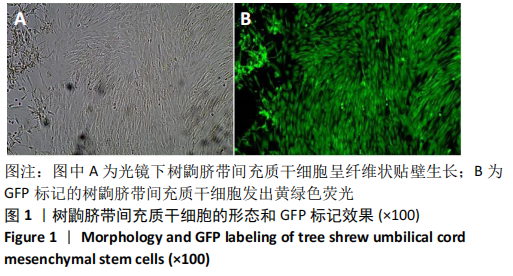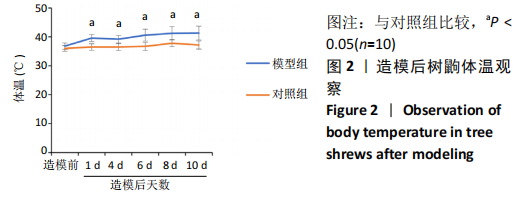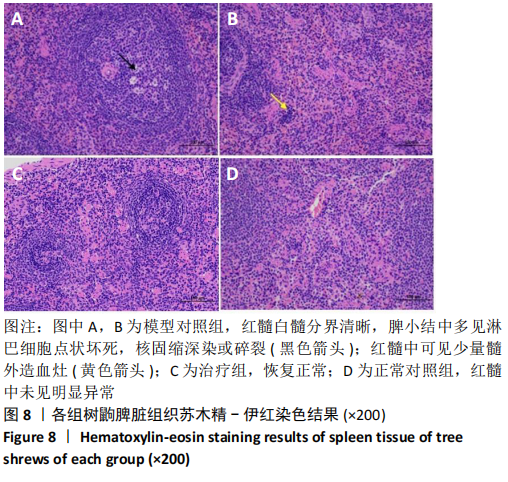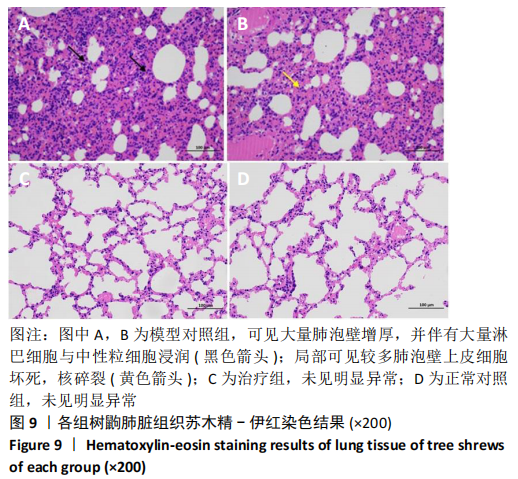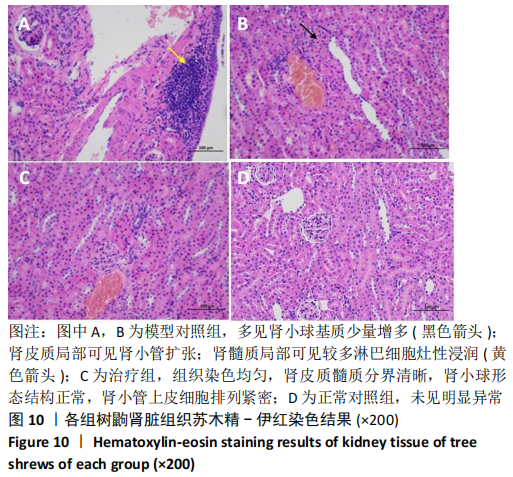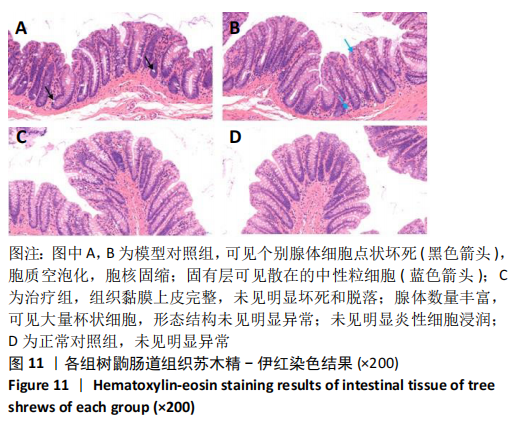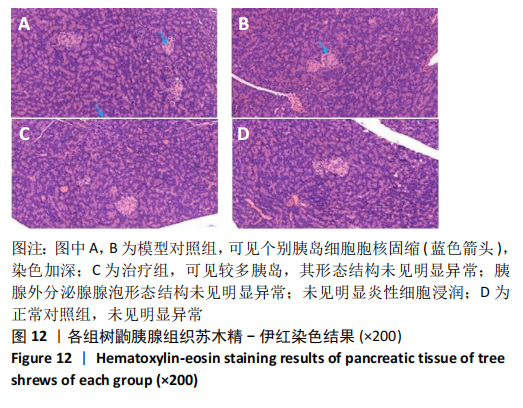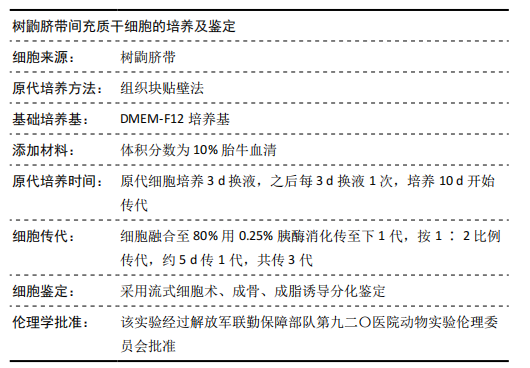中国组织工程研究 ›› 2021, Vol. 25 ›› Issue (25): 3994-4000.doi: 10.12307/2021.010
• 干细胞移植 stem cell transplantation • 上一篇 下一篇
脐带间充质干细胞移植治疗树鼩创伤性全身炎症反应综合征
阮光萍1,2,3,姚 翔1,2,3,刘高米洋1,2,3,蔡学敏1,2,3,李自安1,2,3,庞荣清1,2,3,王金祥1,2,3,潘兴华1,2,3
- 1解放军联勤保障部队第九二〇医院基础医学实验室,云南省昆明市 650032;2干细胞与免疫细胞生物医药技术国家地方联合工程实验室,云南省昆明市 650032;3云南省细胞治疗技术转化医学重点实验室,云南省昆明市 650032
Umbilical cord mesenchymal stem cell transplantation for traumatic systemic inflammatory response syndrome in tree shrews
Ruan Guangping1, 2, 3, Yao Xiang1, 2, 3, Liu-Gao Miyang1, 2, 3, Cai Xuemin1, 2, 3, Li Zian1, 2, 3, Pang Rongqing1, 2, 3, Wang Jinxiang1, 2, 3, #br# Pan Xinghua1, 2, 3#br#
- 1Basic Medical Laboratory of 920 Hospital of Joint Logistics Support Force of PLA, Kunming 650032, Yunnan Province, China; 2Integrated Engineering Laboratory of Cell Biological Medicine of State and Regions, Kunming 650032, Yunnan Province, China; 3Transfer Medicine Key Laboratory of Cell Therapy Technology of Yunan Province, Kunming 650032, Yunnan Province, China
摘要:
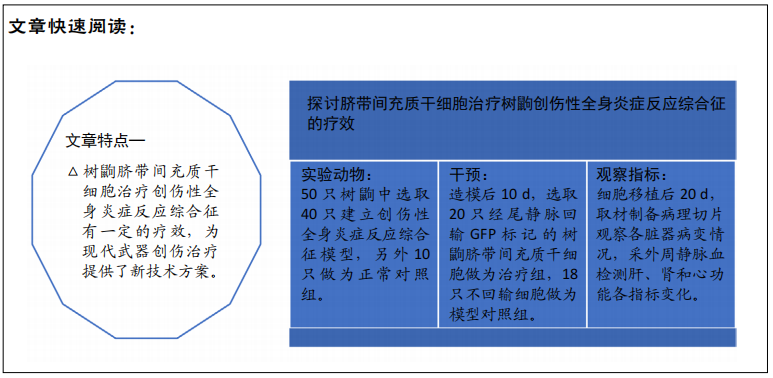
文题释义:
创伤性全身炎症反应综合征:指在创伤、感染、休克等急性危重病时发生机体失控的自我持续放大和自我破坏的全身性炎症反应,出现发热、呼吸急促、心跳加快、体温升高、高代谢状态(高耗氧量、高通气量、高血糖等)、高动力循环(高心排血量和低外周阻力)等症状和体征。
脐带间充质干细胞:是指存在于新生儿脐带组织中的一种多功能干细胞,它能分化成许多种组织细胞,具有广阔的临床应用前景。应用灭活脐带血清培养体系可成功扩增人脐带间充质干细胞,培养的细胞具有间充质干细胞的基本特性,为建立间充质干细胞库和临床应用提供了理论依据。
背景:战创伤防治研究一直是军事医学领域的核心内容,建立可重复的针对战创伤性感染、全身炎症反应综合征、休克、多器官衰竭动物模型及以该动物模型为基础的新型治疗手段具有重大军事及科学意义。
目的:探讨脐带间充质干细胞治疗创伤性全身炎症反应综合征的疗效。
方法:50只树鼩中选取40只采用撞击法制作单侧股骨粉碎性骨折模型后静脉注射脂多糖创建创伤性全身炎症反应综合征模型,另外10只做为正常对照组。造模后10 d,选取20只经尾静脉回输GFP标记的树鼩脐带间充质干细胞,18只不回输细胞做为模型对照组。细胞移植后2,
10 d时,取材检测GFP标记细胞在各组树鼩各脏器内的分布;细胞移植后20 d,取材制备病理切片观察各脏器病变情况,采外周静脉血检测肝功能、肾功能和心功能各指标变化。
结果与结论:①移植后2,10 d时,各脏器中均观察到GFP阳性细胞分布, 其中移植后2 d时胰腺组织中荧光细胞分布较明显,移植后10 d时肝脏组织中GFP阳性细胞分布较多;②移植后20 d时,模型对照组各脏器苏木精-伊红染色结果可见细胞坏死,炎症细胞浸润,治疗组接近正常对照组;治疗组肝功能、肾功能和心功检测结果恢复正常;③结果表明,树鼩脐带间充质干细胞治疗创伤性全身炎症反应综合征有一定的疗效,为现代武器创伤治疗提供了新技术方案。
中图分类号:
